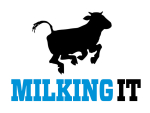With the B+LNZ annual meeting documentation currently hitting farmer's mailboxes, claims are being made that with the unprecedented number of farmer-proposed remits the organisation has become disconnected from its grassroots levy payers. David Anderson reports.
North Otago farmer Jane Smith is one of those proposers and says the suite of farmer-remits demonstrates the level of discontent from farmers.
"With nine farmer-proposed remits on the table, this is an unprecedented come-to-Jesus moment for the levy organisation," she tells Rural News.
"At best, B+LNZ has been naïve in their approach to advocacy and disingenuous in its offhand approach to taking farmer-raised concerns seriously. When the Farmer Council Environmental Reference was recently put under a code of conduct not allowing them to oppose B+LNZ decisions in public, it became crystal clear that B+LNZ is an organisation under poor governance," Smith claims.
Many farmers Rural News has spoken to are concerned that current B+LNZ farmer directors have too much of a corporate lens when advocating and not a 'real-life farmer' approach or a passion for fighting for the future of modest family farms.
The nine remits range from a demand to immediately exit He Waka Eke Noa, an independent review of B+LNZ advocacy, clarity on 'weighted levy voting' implications, asking for clarity on the role of the Farmer Council and a request for unrelenting advocacy for the sheep and beef sector in the first instance.
Smith says responses by B+LNZ to the farmer remits appear to largely agree with the remits, but seem to signal an intent to simply "push on" with the status quo.
"Many of us have battled against Beef + Lamb over the past two years asking them to take a stronger, more focused stance on regulation hitting farmers," she adds. "One such example was the closed-door, flawed design of He Waka Eke Noa, and the subsequent entrenched defence using an ETS justification.
"Tinkering around the edges does not alter those fundamental flaws. Have no doubt, the HWEN proposal was just as bad as the Government version of the proposal and both will escalate and accelerate the loss of farming land."
Smith believes that B+LNZ, under its current leadership regime, risks losing support of all activities unless it acknowledges that its advocacy arm is not 'fit for purpose'.
"B+LNZ's extension programmes are highly valuable and 'Beef + Lamb Genetics' is a world-leading powerhouse of information," she says. "However, unless it can show more courageous leadership in their advocacy (or exit it completely) then the entire levy organisation is doomed."
Smith believes B+LNZ needs to decide which side of the legislative ledger they sit.
"How effective can it be at confronting the Government on unworkable regulation, yet at the same time having its hand out for government funding like the upcoming 'Integrated Farm Plan' slush fund?" she asks.
"Is B+LNZ a messenger for farmers to the Government or a messenger to farmers for the Government?"
Smith says levypayers have been calling for a review of farmer advocacy for nearly three years now.
"We cannot afford any more PR spin or re-shuffling of the deckchairs. If we continue on the trajectory towards losing one million sheep and beef stock units/year from our livestock sector, then there will be no levy money at all - just government handouts".
The B+LNZ AGM will be held in New Plymouth on March 30th. All remit proposers have indicated they will be speaking to their remits, with many raising concern about the allocation of only 1.5 hours for the entire meeting.



















